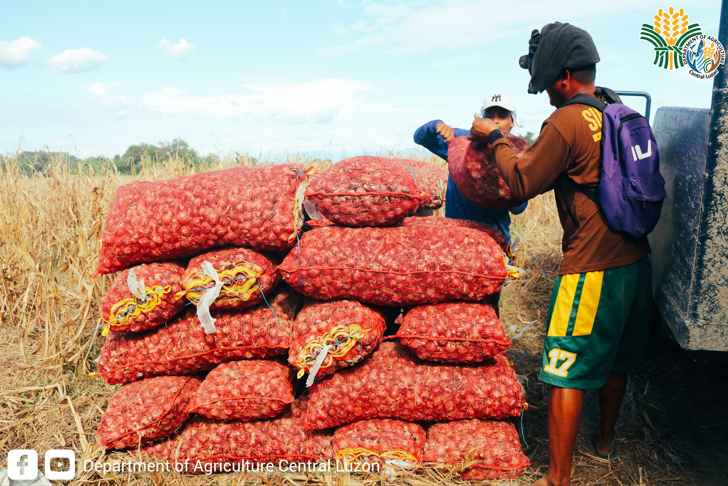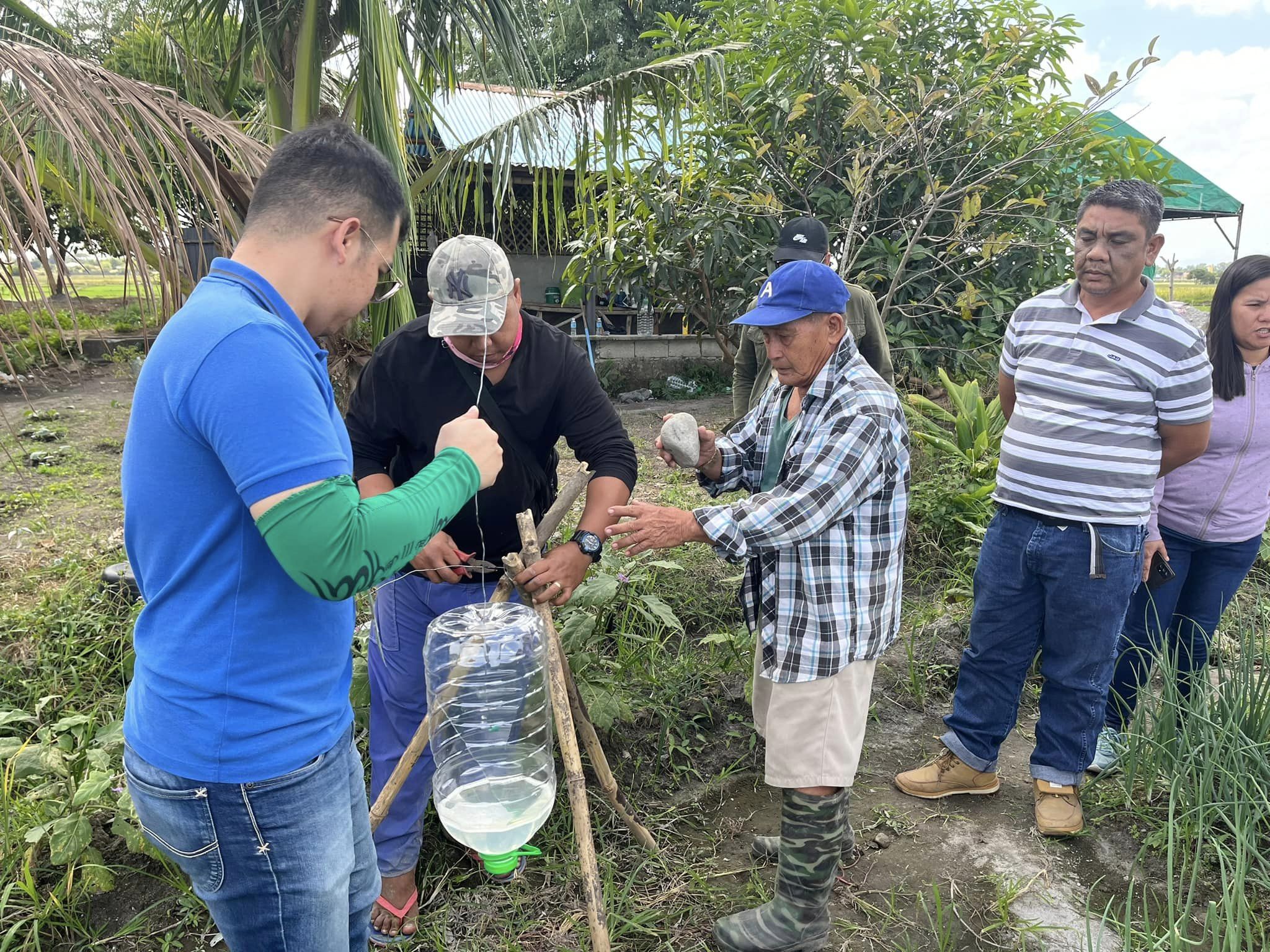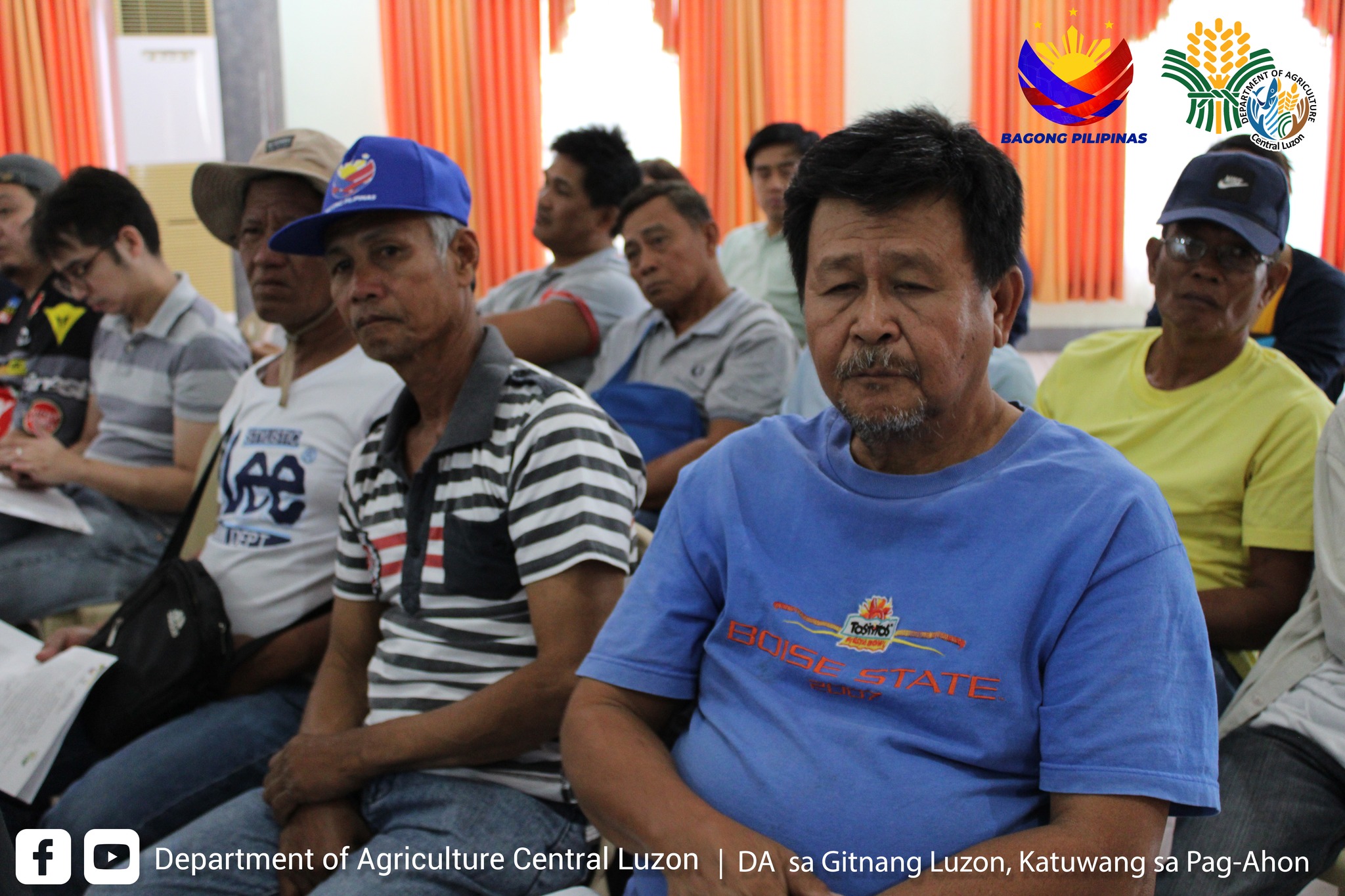In 2023, onions made Filipinos teary-eyed not only because of the chemical they release when being cut, but also due to the surge in prices. It came to a point that a kilo of onion costs more than a kilo of beef.
While the price of onions has stabilized, the Department of Agriculture (DA) continues to assist farmers in Central Luzon amid other threats that threaten agricultural production.

Onion growers in Tarlac pile sacks of harvested onions. Central Luzon contributes 55 percent to the country's onion production, the highest among the regions. (DA Central Luzon)
AB David, the focal person for high value crops development of the DA Regional Field Office, said Central Luzon contributes 55 percent to the country's onion production, the biggest in the country.
Its production is currently at 320 percent sufficiency level, meaning that it will be able to adequately supply the needs of consumers in the region.
Also, the region has seen an increase in the total number of areas planted with onions. About 13,497 hectares of land in the region are planted with onions, as of February 23.
The region also recorded a very high increase in terms of volume of production. Farmers harvested a total of 212,184 metric tons of red and yellow onions and shallots, as of February 23.
“Last year, we remember that the price of onions was very high. For this year, there is an urgency for our farmers to shift into onion farming that is why the number of onion farmers has increased,” she said.
Other farmers in non-onion producing places in the region also switched to onion planting including those in Bacolor, Arayat, Magalang, and Mabalacat City in Pampanga, and some places in Bataan and Tarlac.

Department of Agriculture Regional Field Office III assists onion farmers in barangay Sta. Maria in Mabalacat City in the installation of pheromone traps to avoid the infestation of onion armyworms, locally known as harabas. (DA Central Luzon)
Interventions
David underscored that some onion farms in Central Luzon are being infested with armyworms, locally known as harabas.
To avoid this, DA is assisting farmers in the installation of pheromone traps to lure the insects.
“We are also giving free onion seeds, plastic mulch to decrease their post-harvest losses, pallets for their cold storage facilities, sprayers, cultivators, and shovels,” she added.
The agency is also set to turn-over three units of onion cold storage facilities to the municipalities of Laur and Cuyapo in Nueva Ecija, and Hermosa in Bataan costing P140 million.
It will also build four cold storage facilities for onions with a total cost of about P191 million. Two of these will be in Nueva Ecija, and one each in Pampanga and Tarlac.
To avail any of these assistance, David urged onion farmers to seek the help of their municipal or city agriculture office.
“Our provinces have their own high-value crops development coordinator where they could connect them if they want to avail the help from the government,” she said.
The basic requirement is that farmers are registered in the Registry System for the Basic Sectors in Agriculture, and they are members of farmers’ cooperative or association.
They should also prepare a letter of intent addressed to the DA regional director, and have this endorsed by both the municipal or city agriculturist and the provincial agriculturist.

Onion farmers in Bongabon, Nueva Ecija attend the market linkage meeting with institutional buyers organized by the Department of Agriculture High-value Crops Development Program. (DA Central Luzon)
Climate change
Climate change has also been a concern in onion production.
As a tropical country, the Philippines is at risk of global warming which may disrupt crop growth.
DA Regional Field Office Agri-business and Marketing Assistance Division OIC-Chief Maricel Dullas emphasized that they are directly linking farmers to markets where they can sell their produce.
“In this way, they will not pass through traders, and their products will be sold at lower prices. This is a win-win situation because farmers will get more profit while consumers will get these products at affordable prices,” she said.
The agency conducts market linkage meetings with onion growers and institutional buyers. In this way, farmers as well as buyers get to set the right price.
In addition, Dullas shared that DA is also organizing Kadiwa trade fairs. This is an initiative of President Ferdinand R. Marcos Jr. of bringing the market closer to the farmers to lessen the added cost from the middlemen.
“Local government units are also encouraged to conduct these trade fairs to help the farmers in their localities,” she said.
The agency may also lend trucks to farmers for them to be able bring their products to the markets.
“If the products are within the region or in the province, they won’t need to spend anything. They can bring their products [to the markets] without costs,” she added.
Farmers who need any of these assistance may physically go to the office of DA Central Luzon, or message its Facebook page at https://www.facebook.com/DARFO3. (CLJD/JLDC-PIA 3)
